The Sumptuous World of Damask
by Shax Riegler for Martha Stewart Living, January 2006
A Chinese writer once likened the reverse side of a woven fabric to a language that has been translated: The threads are there, but the complexity of colors and shapes is lost. While this may be true of most textiles, damask is a dazzling exception. It is woven in such a way that the pattern on one side is the inverse of the other. The double-faced design lends itself to a variety of applications. And because the fabric is often made with fine materials and comes in elaborate motifs, it is one of the world’s most luxurious and intriguing fabrics. “I’m drawn to the patterns, the weave, and the extraordinary colors,” says Martha, who collects nineteenth-century French and Italian damasks, and whose home in Seal Harbor, Maine, was the setting for this story.
Traditionally, damask is monochromatic, made from a single shade of silk or linen. The pattern is distinguished by the way light plays off the warp, or vertical, and weft, or horizontal, threads. Some damasks even look different depending on the time of day. Over the last century, the definition of damask has expanded to include fabrics made with two or three colors, as well as other fibers, such as cotton, wool, or rayon. Still other fabrics are merely printed to look like damask, but these, of course, are not reversible.
The first silk damasks, consisting primarily of botanical and animal patterns, were produced in China around 300 B.C. They were traded along the Silk Road, which stretched from the Far East to the Mediterranean, and may have gotten their name from Damascus, one of the cities merchant caravans passed through en route to Europe. This was the beginning of a fascinating history. Damask and fabrics like it were so coveted that rulers of kingdoms went to great lengths to learn the secrets of silk weaving. In the sixth century, the Byzantine emperor commissioned monks to smuggle silkworms out of China in hollowed-out walking sticks. During the Second Crusade, weavers were taken from Greece and installed in royal workshops in Palermo, Sicily. Their methods spread to Venice, Lucca, and Genoa, where versions of Chinese and Arabic motifs were produced starting in the fifteenth century. By the 1700s, weavers in Lyon, France, were putting a more naturalistic spin on already-popular Asian and European designs. Aristocrats entertained in rooms appointed with matching damasks on walls, curtains, and upholstered furniture. Napoleon favored overscale neoclassical imagery such as urns, eagles, and shields, as well as — naturally — N motifs. The Industrial Revolution ushered in mass production, making woven and printed fabrics more affordable for the growing middle class. Later, during the Arts & Crafts movement — whose proponents saw machine-made designs as inferior and immoral — damasks were once again hand-crafted, often depicting stylized images of plant and animal life.
Damask table linens have their own story. They were first produced in the 1600s, when weavers in the Low Countries (today’s Belgium and the Netherlands) began making fine-quality white linen damask tablecloths and napkins. These were embellished with the previously established patterns, as well as intricate scenes including depictions of famous battles or stories from the Bible. Linen damask became de rigueur on the tables of well-to-do Europeans and Americans — a trend that continued for centuries. In 1926, etiquette expert Emily Post wrote of damask, “No other table covering, no matter how fine or elaborate, satisfies our inherent sense of faultless suitability.” Today’s tastemakers still agree with her.
Despite its historic roots, damask can appear delightfully up-to-date. “It looks equally good in simple, contemporary interiors as is does in more lavish, traditional abodes,” Martha says. Case in point: At Fallingwater, architect Frank Lloyd Wright’s 1937 masterpiece of modern domestic design near Pittsburgh, a gold damask bedspread shimmers in the otherwise spare wood-and-glass master bedroom. On these pages, you’ll find ideas for incorporating damasks into your home. All are beautiful, glamorous, and versatile — no matter which way you look at them.
—————————————————————————
—————————————————————————-
In the previous Holiday article I wrote on the Saxony Damask tablecloths, http://premiertablelinens-blog.com/saxony-damask-tablesettings/ there are many ideas and inspirations for the Holidays. I do wish to stress that the Saxony Damask is not only appropriate for the Holidays but for any formal occasion, fine dining, weddings or for a very elegant every day table decor’. In fact, I have found since using and washing my Saxony Damask table linens and napkins many times after the Holidays, the more they are laundered, the more the floral patters are accented. Considering the price Premier Table Linens sells this luxurious Damask, it is affordable for every day use as well and with 13 colors available, you can have more than one color to vary your table setting.
Premier Table Linens offers seven Damask fabrics, each Damask fabric with its unique pattern. Besides the Saxony, there is the Somerset, Melrose, Miranda, Kenya, Gabriela and Kensington. Barbara Jacksier wrote a very informative article on the Kenya http://premiertablelinens-blog.com/out-of-africa/ and I will be writing on the other beautiful Damask collection Premier Table Linens offers in the next few months so stay tuned.

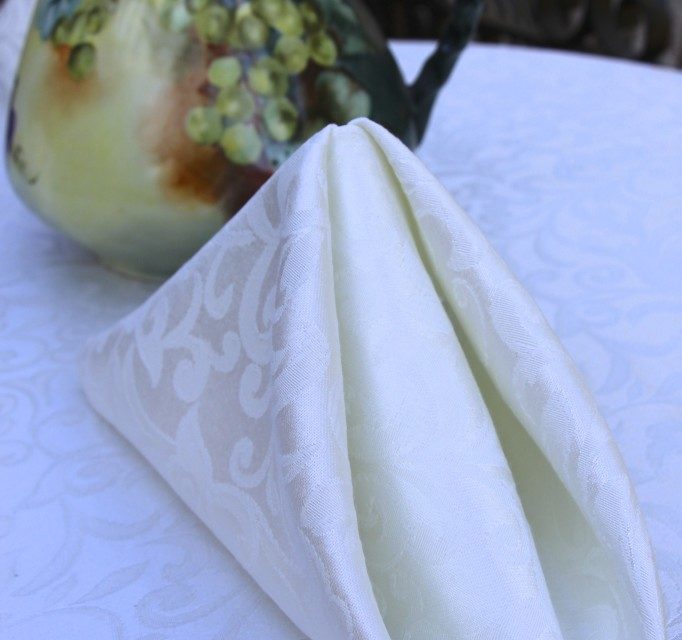
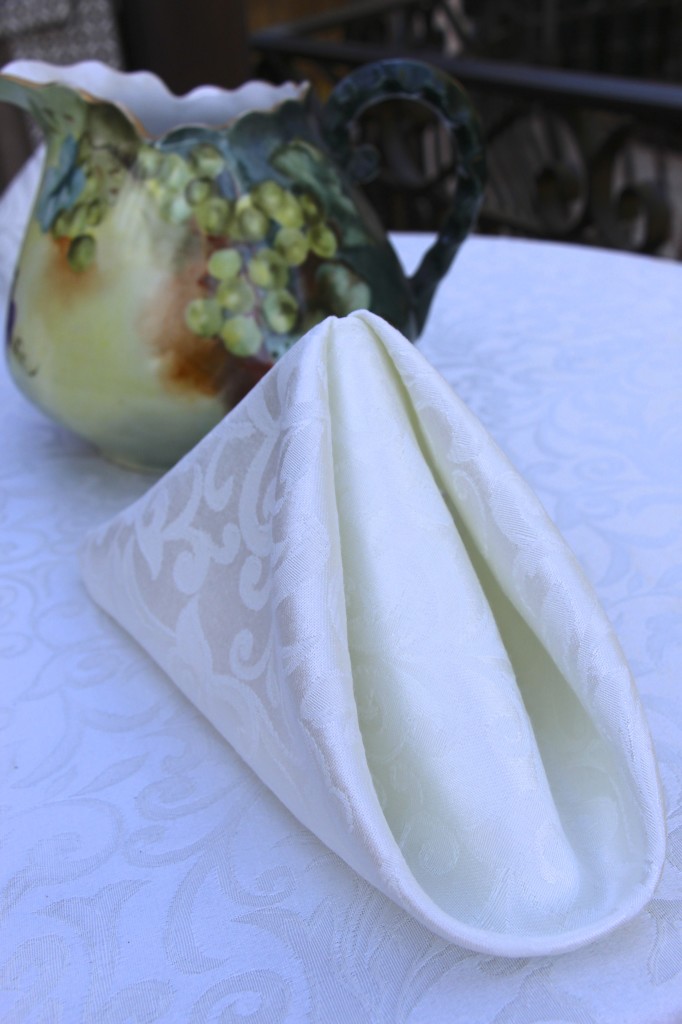
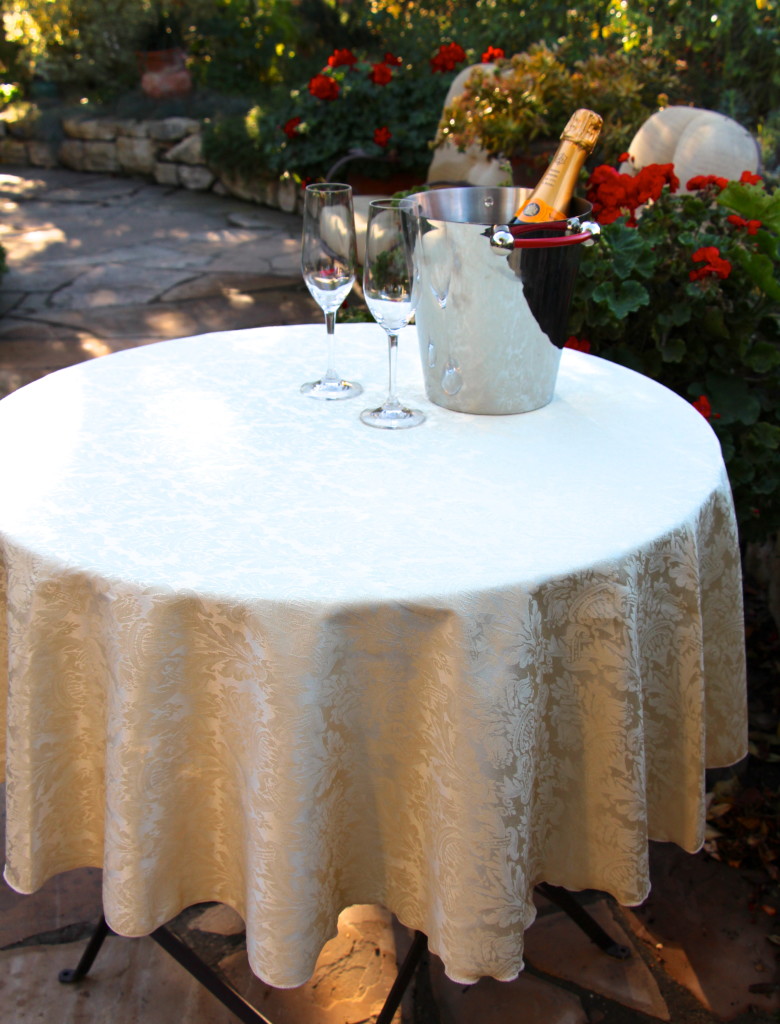
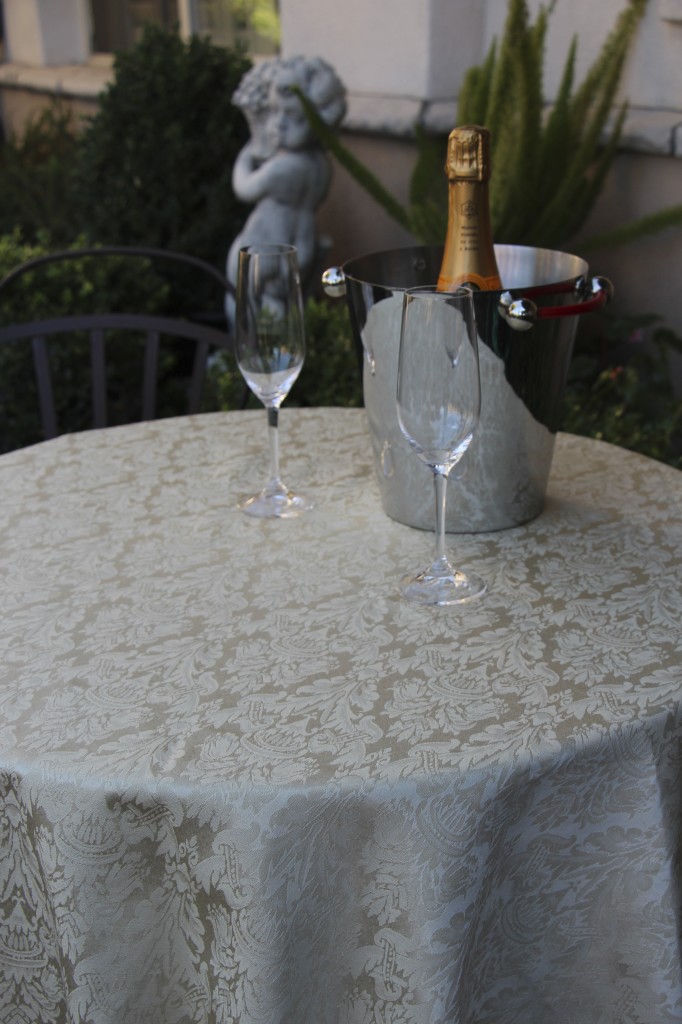
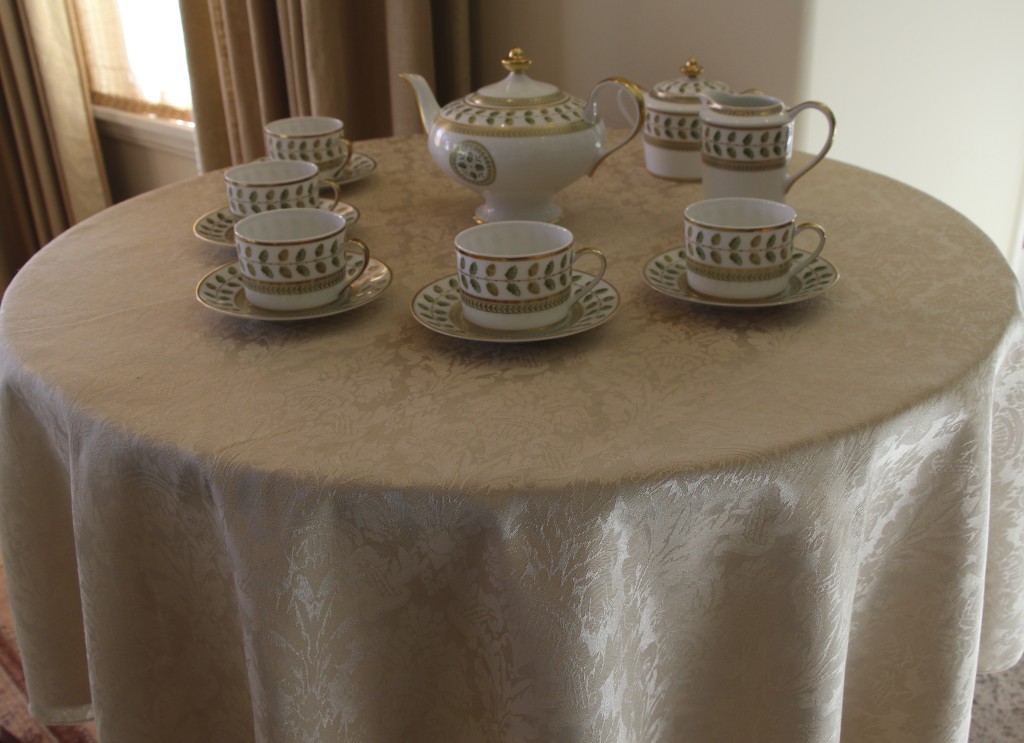
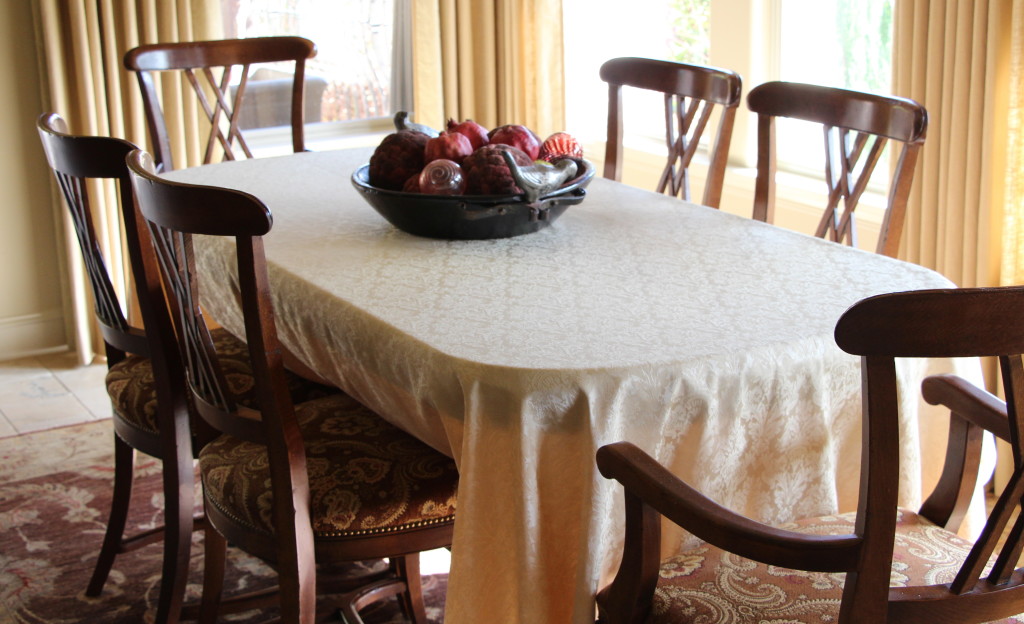


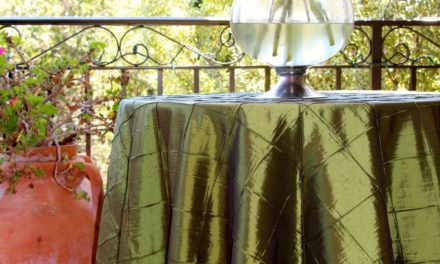

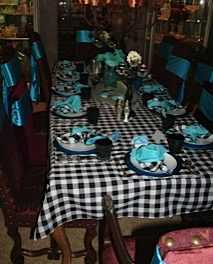
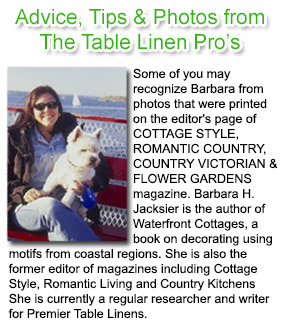













Mike Boullion
on April 9, 2014 at 9:18 amThank you for such an informative article and beautiful pictures.
Lisa Ortega
on February 15, 2014 at 9:42 amI found this article fascinating and the pictures of the linens absolutely lovely. Thank you so much.